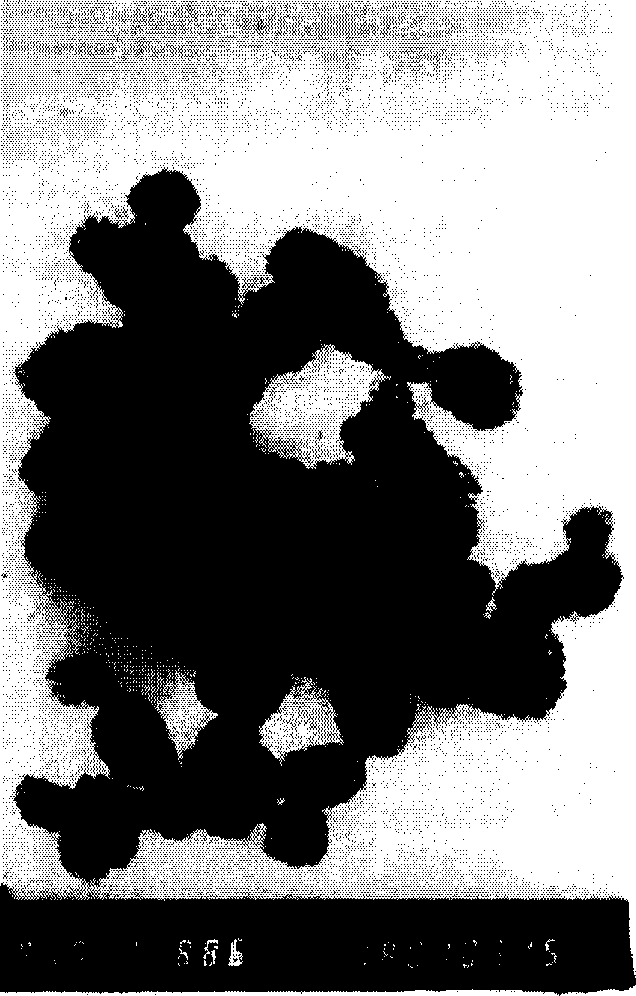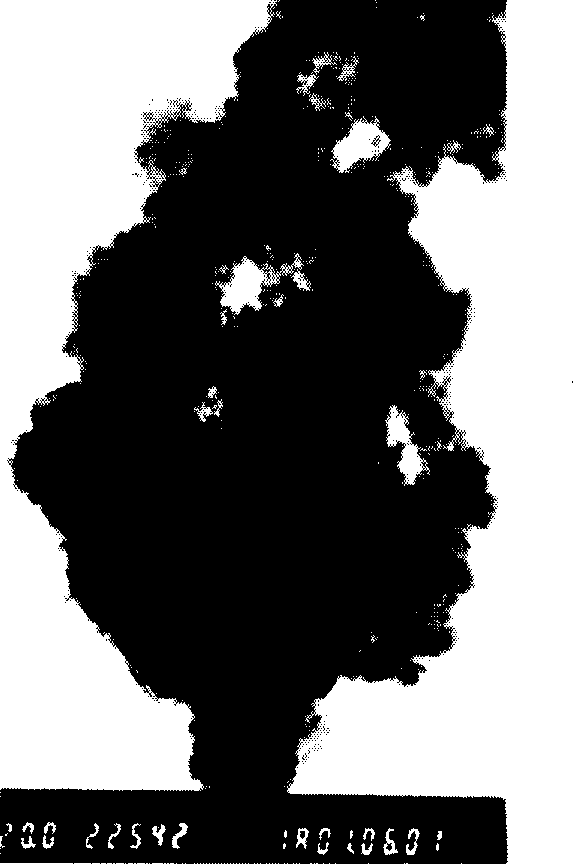Surface treatment method for improving hydrophobicity of Nano particles of calcium carbonate
A nano-calcium carbonate and surface treatment technology, which is applied in the direction of dyeing polymer organic compound treatment, fibrous fillers, etc., can solve problems such as thermal stability decline
- Summary
- Abstract
- Description
- Claims
- Application Information
AI Technical Summary
Problems solved by technology
Method used
Image
Examples
Embodiment 1
[0036] A. Emulsion polymerization:
[0037] The soft monomer is n-butyl acrylate, and the hard monomer is methyl methacrylate. Blend the soft monomer, hard monomer and methacrylic acid (the third component acid) in a weight ratio of 11:9:0.6 to form a monomer blend liquid. Emulsifier selects sodium dodecyl sulfate (SDS) and alkylphenol polyoxyethylene ether (OP-10), is respectively 0.25 gram and 0.55 gram, two kinds of emulsifiers are mixed in 15 grams of deionized water, heated to completely dissolved. Add the dissolved emulsifier solution into the reactor, then add 4.12 grams of the above-mentioned monomer blend solution, stir and heat up to 75 ° C, and add 0.06 grams of ammonium persulfate (analytical pure) dissolved in 23 grams of deionized water at one time . When the temperature rises back to 80°C, the monomers start to be triggered, and when the system obviously appears "blue", keep the reaction temperature at 80°C, then add 37.08 grams of the monomer blend solution ...
Embodiment 2
[0043] A. Emulsion polymerization:
[0044] The soft monomer is 2-ethylhexyl acrylate, and the hard monomer is methyl methacrylate. Blend the soft monomer, hard monomer and methacrylic acid (the third component acid) at a weight ratio of 10:10:0.2 to form a monomer blend. Emulsifier selects sodium dodecyl sulfate (SDS) and alkylphenol polyoxyethylene ether (OP-10), is respectively 0.24 gram and 0.48 gram, two kinds of emulsifiers are mixed in 15 grams of deionized water, heated to completely dissolved. Add the dissolved emulsifier solution into the reactor, then add 4.242 grams of the above-mentioned monomer blend solution, stir and heat up to 75 ° C, and add 0.021 grams of ammonium persulfate (analytical pure) dissolved in 22 grams of deionized water at one time . When the temperature rises to 80°C, the monomers start to be triggered, and when the system obviously appears "blue", keep the reaction temperature at 80°C, then add 37.178 grams of the monomer blend solution dro...
Embodiment 3
[0050] A. Emulsion polymerization:
[0051] The soft monomer is selected from ethyl acrylate, and the hard monomer is selected from methyl methacrylate. Blend the soft monomer, hard monomer and acrylic acid (the third component acid) in a weight ratio of 10:10:0.1 to form a monomer blend liquid. Emulsifier selects sodium dodecyl sulfate (SDS) and alkylphenol polyoxyethylene ether (OP-10), is respectively 0.34 gram and 0.48 gram, two kinds of emulsifiers are mixed in 15 grams of deionized water, heated to Dissolve completely, add the emulsifier solution that has dissolved in the reactor, then add 4.12 grams of the above-mentioned monomer blends, stir and heat up to 75 ° C, and add 0.02 grams of ammonium persulfate dissolved in 23 grams of deionized water ( analytically pure). When the temperature rises to 80°C, the monomers start to be triggered, and when the system obviously appears "blue", keep the reaction temperature at 80°C, then add 37.08 grams of the monomer blend solu...
PUM
| Property | Measurement | Unit |
|---|---|---|
| thickness | aaaaa | aaaaa |
| diameter | aaaaa | aaaaa |
| diameter | aaaaa | aaaaa |
Abstract
Description
Claims
Application Information
 Login to View More
Login to View More - R&D Engineer
- R&D Manager
- IP Professional
- Industry Leading Data Capabilities
- Powerful AI technology
- Patent DNA Extraction
Browse by: Latest US Patents, China's latest patents, Technical Efficacy Thesaurus, Application Domain, Technology Topic, Popular Technical Reports.
© 2024 PatSnap. All rights reserved.Legal|Privacy policy|Modern Slavery Act Transparency Statement|Sitemap|About US| Contact US: help@patsnap.com










